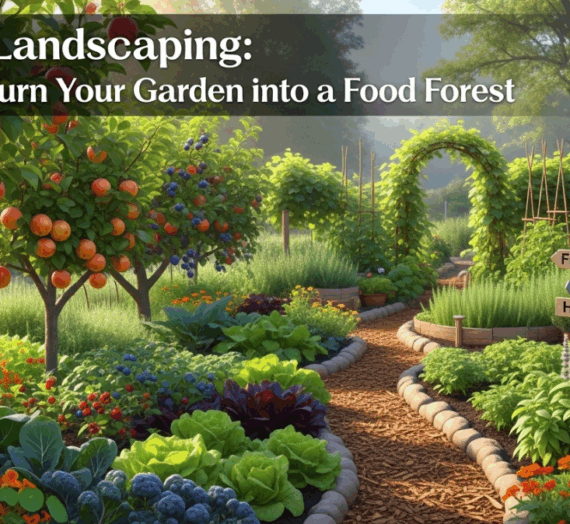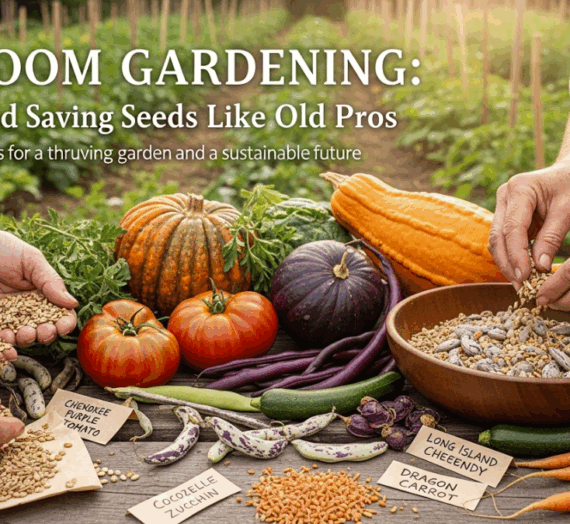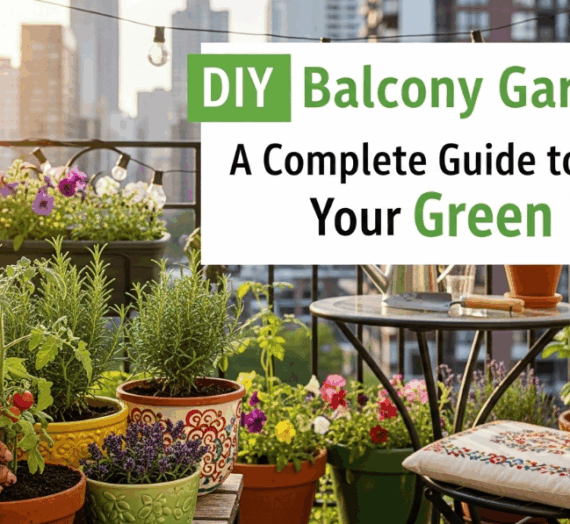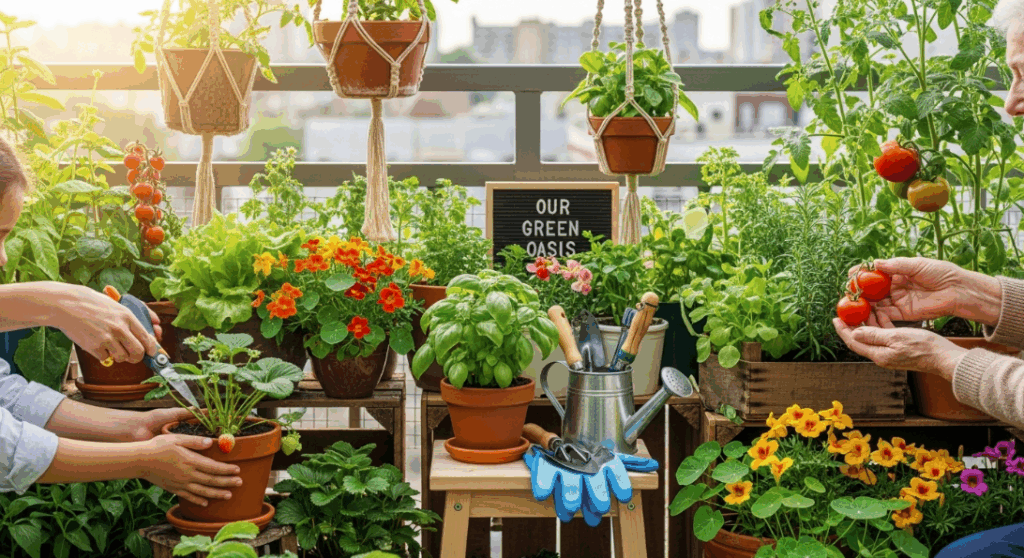
Introduction: Cultivating Your Own Green Sanctuary
Imagine stepping into your backyard or balcony and plucking fresh, sun-ripened tomatoes, crisp lettuce, or fragrant herbs for your dinner. The satisfaction is immeasurable, and the flavor unparalleled. DIY home gardening isn’t just a hobby; it’s a journey towards self-sufficiency, a connection with nature, and a source of profound well-being. In an increasingly fast-paced world, creating your own green oasis provides a much-needed respite, a hands-on activity that nourishes both body and soul. This comprehensive guide will equip you with the knowledge and confidence to embark on your own home gardening adventure, transforming any space into a vibrant, productive haven.
Whether you have a sprawling backyard, a compact balcony, or even just a sunny windowsill, the principles of home gardening remain the same. This article will delve into the essential steps, from planning and preparing your soil to planting, nurturing, and harvesting your bounty. We’ll explore various gardening techniques, offer practical tips for pest control, and inspire you to embrace the rewarding world of growing your own food and beautiful plants. Get ready to dig in and discover the countless benefits of cultivating your very own garden at home.
Planning Your Perfect Patch: Where to Begin
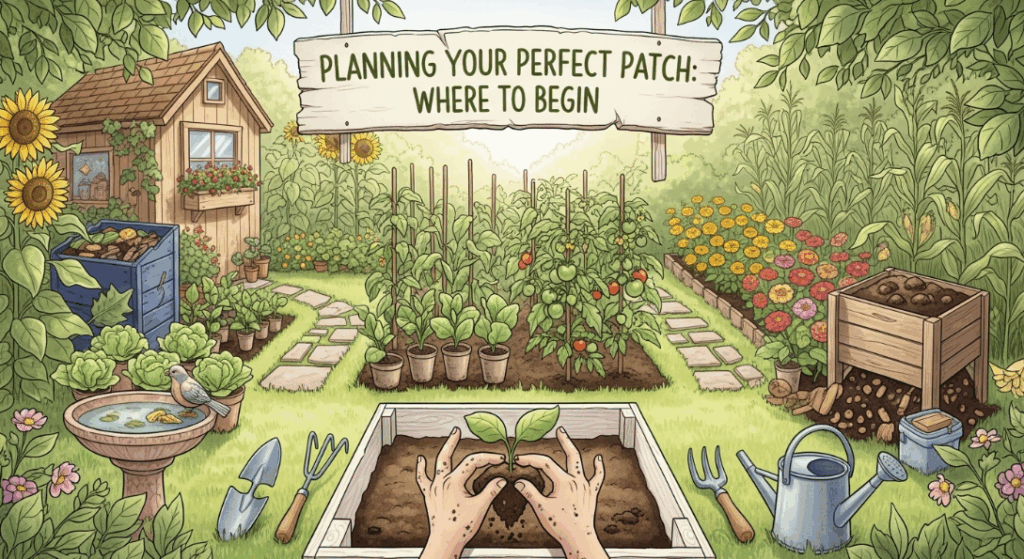
Before you even think about getting your hands dirty, a little planning goes a long way. This initial phase is crucial for ensuring your DIY home gardening efforts are successful and sustainable. Consider the space you have available, the amount of sunlight it receives throughout the day, and what you ultimately want to grow. Are you dreaming of a vibrant vegetable patch, a fragrant herb garden, or a stunning display of flowers? For more detailed scientific insights about plant sunlight needs, see Google Scholar research on plant sunlight requirements or Bing search on plant sunlight needs.
Assessing Your Space and Sunlight Needs
Sunlight is the lifeblood of most plants. Observe your chosen gardening spot throughout the day to understand its light exposure. Most vegetables and flowering plants require at least 6-8 hours of direct sunlight daily. If your space is shadier, don’t despair! Many leafy greens, root vegetables, and certain herbs can thrive in partial shade.
Next, evaluate the size and type of your space. For a small balcony, container gardening or vertical gardens are excellent options. If you have a larger yard, raised beds can offer better control over soil quality and drainage. Sketching out your garden layout can help visualize the possibilities and optimize your planting strategy.
Soil: The Foundation of Your Garden
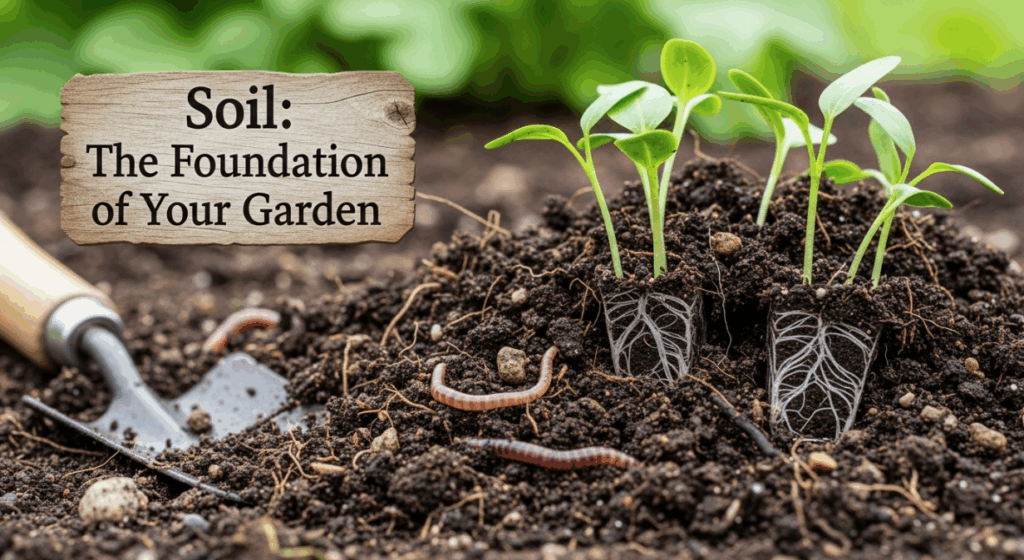



Healthy soil is the cornerstone of a thriving garden. Think of it as the pantry for your plants, providing essential nutrients, water, and aeration for root development. Neglecting soil quality is a common mistake for novice gardeners, leading to disappointing results. Understanding your soil type and enriching it is paramount for successful DIY home gardening.
Understanding Soil Types and Amendments
Soil is broadly categorized into sand, silt, and clay, each with different properties. Ideally, you want a balanced loam soil, which offers good drainage, water retention, and nutrient availability. You can perform a simple jar test to determine your soil composition. Regardless of your existing soil, you’ll almost certainly benefit from incorporating organic matter.
Compost is a gardener’s gold. Adding well-rotted compost enriches the soil with vital nutrients, improves its structure, and enhances its water-holding capacity. Other beneficial amendments include aged manure, leaf mold, and worm castings. Regularly amending your soil ensures a continuous supply of nourishment for your growing plants, making your home garden more productive.
Choosing Your Crops: What to Grow

With your space assessed and soil prepared, it’s time for the exciting part: choosing what to plant! For DIY home gardening, starting with easy-to-grow varieties can boost your confidence and provide quick rewards. Consider your climate, personal preferences, and the space available.
Beginner-Friendly Vegetables and Herbs
For first-time gardeners, leafy greens like lettuce, spinach, and kale are fantastic choices as they grow relatively quickly. Radishes, carrots, and bush beans are also forgiving. If you’re keen on herbs, basil, mint, rosemary, and thyme are robust and incredibly rewarding. Tomatoes, while a bit more demanding, are a popular choice for their incredible flavor when home-grown. Start small and expand as your skills and confidence grow.
Don’t forget to think about succession planting – planting small batches of seeds every few weeks – to ensure a continuous harvest throughout the growing season. This technique maximizes your yield and prevents an overwhelming abundance all at once.
Planting and Nurturing Your Garden
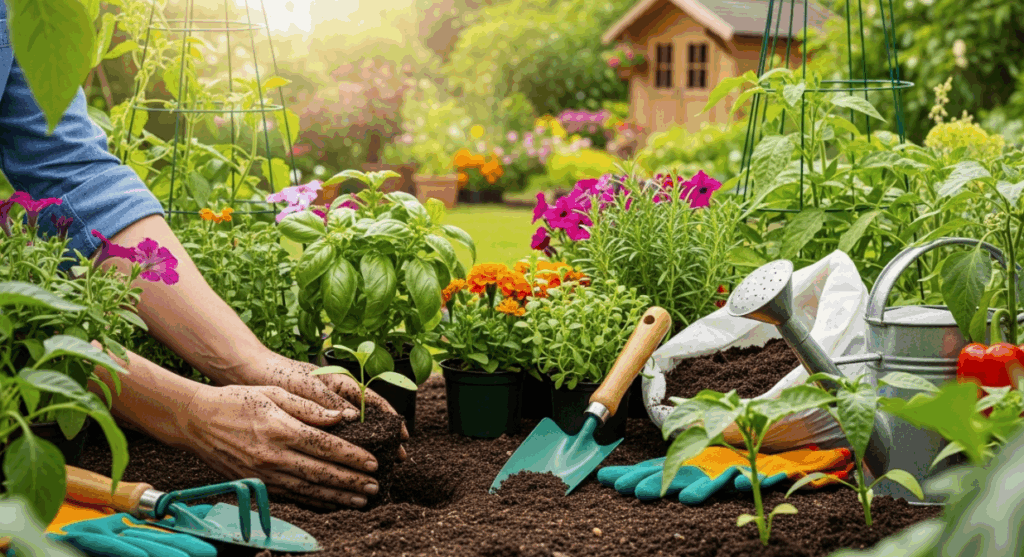
Once you have your seeds or seedlings, the real fun begins. Proper planting techniques and consistent care are essential for healthy plant growth and a bountiful harvest. DIY home gardening requires patience and observation, but the rewards are well worth the effort.
Watering, Fertilizing, and Pest Control
Watering is critical, but overwatering can be detrimental. Check the soil moisture before watering; it should feel slightly dry to the touch a few inches down. Deep, infrequent watering encourages strong root development. Mulching around your plants helps retain moisture, suppress weeds, and regulate soil temperature. Learn more about watering plants properly.
While healthy soil provides many nutrients, some plants may benefit from occasional feeding with organic fertilizers. Always follow package directions to avoid over-fertilizing, which can burn plants. For pest control, opt for organic solutions first. Companion planting, introducing beneficial insects, and homemade sprays (like neem oil solutions) can effectively manage common garden pests without harmful chemicals. For detailed studies on organic pest control, see Google Scholar organic pest control research.
Harvesting Your Hard Work and Enjoying the Bounty
The moment of harvest is the culmination of your DIY home gardening efforts – a truly satisfying experience. Knowing when and how to harvest your produce ensures the best flavor and encourages continued production from your plants.
Tips for Maximizing Your Yield
Harvesting at the right time is key. For most leafy greens, you can pick outer leaves as needed, allowing the plant to continue producing. Root vegetables are ready when they reach a desirable size. Tomatoes and peppers should be picked when fully colored and firm. Regular harvesting encourages plants to produce more, extending your growing season.
Don’t be afraid to experiment and learn from your garden. Each season brings new lessons and opportunities for growth. Share your bounty with friends and family, preserve excess produce, and revel in the freshness and flavor that only a home garden can provide. DIY home gardening is a continuous learning process, full of delightful surprises and delicious rewards.
Conclusion: Your Thriving Home Garden Awaits
Embarking on a DIY home gardening journey is a deeply enriching experience, offering not just fresh produce but also a connection to nature, stress relief, and a profound sense of accomplishment. From the initial planning stages and understanding your soil to the joyful act of harvesting your own food, every step contributes to creating a sustainable and vibrant living space. Remember, gardening is a continuous learning process; embrace the challenges and celebrate the successes, no matter how small.
So, what are you waiting for? Grab your gardening gloves, a few essential tools, and a handful of seeds. The path to a flourishing home garden is within your reach. Start small, be patient, and most importantly, enjoy the incredible journey of growing your own green oasis. Your taste buds and your well-being will thank you for it! Start your DIY home gardening adventure today!
Summary Table: Key Steps for DIY Home Gardening
| Step | Description | Key Tips |
|---|---|---|
| Planning | Assess space, sunlight, and what you want to grow. | Observe light exposure; choose container or raised beds accordingly. |
| Soil Preparation | Understand soil type; enrich with organic matter. | Use compost, manure, leaf mold, worm castings for better nutrients. |
| Choosing Crops | Select beginner-friendly vegetables and herbs. | Start small; consider succession planting for continuous harvest. |
| Planting & Care | Plant seeds/seedlings properly; water and fertilize carefully. | Water deeply but infrequently; use organic fertilizers; control pests organically. |
| Harvesting | Pick at right maturity for best flavor and ongoing production. | Harvest regularly; experiment and learn each season. |

